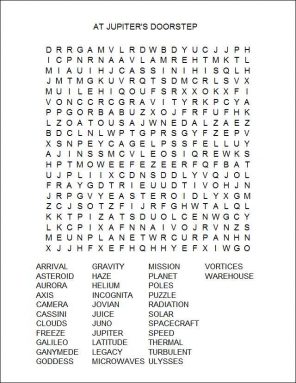Juno’s knocking on Jupiter’s door
Mission will peer beneath the gas giant’s clouds and fly in close to its monstrous auroras
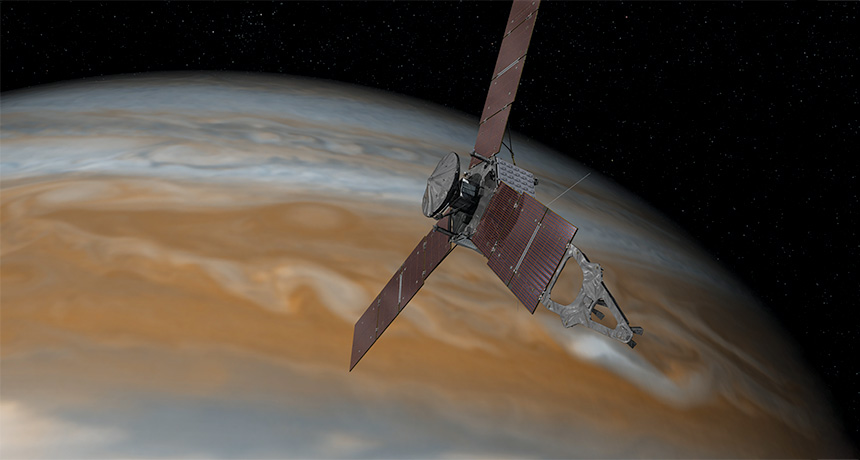
The spacecraft Juno left Earth 5 years ago. Soon it will arrive at Jupiter and begin its up close investigations of the planet.
NASA/JPL-Caltech
Ancient stargazers chose well when they named the solar system’s largest planet. That’s because Jupiter was king of the Roman gods.
With more than twice the mass of all the other planets combined, Jupiter also reigns supreme. It’s the most influential member of our planetary family. Jupiter might have hurled the asteroids that delivered water to Earth. It may have robbed Mars of planet-building material. And it could have nudged Uranus and Neptune to the outskirts of our solar system. Jupiter is also a massive time capsule. This ball of gas records what conditions were like when the planets formed more than 4 billion years ago.
SPLASH DOWN Earth may have Jupiter (and Saturn) to thank for bringing it water, as shown in this animation. Drawings by Helen Thompson; narrated and produced by Helen Thompson and Ashley Yeager |
People have been scrutinizing Jupiter for more than four centuries. Eight spacecraft have visited the planet. But thick clouds conceal what goes on deep inside. So many of the planet’s most basic mysteries remain.
The Juno spacecraft is about to break through the haze. The National Aeronautics and Space Administration, or NASA, launched its spacecraft. It will arrive at the giant world on July 4.
“We don’t know what the inside of Jupiter is like at all,” says Scott Bolton. He is a planetary scientist at the Southwest Research Institute in San Antonio, Texas. He also heads the Juno mission. In just a short while, he notes, “We’re going to see beneath the cloud tops for the very first time.”
Juno gets its name from Jupiter’s wife, a goddess who peered through a veil of clouds and saw her husband’s true nature.
The Juno probe left Earth on August 5, 2011. It’s nearly five-year journey has taken it about 2.8 billion kilometers (1.7 billion miles). Upon arrival, it is due to spend 20 months orbiting and scrutinizing the gas giant. If all goes well, Juno will measure how much water lurks beneath the clouds. It will map Jupiter’s interior. And it will deliver humanity’s first good look at the planet’s polar regions.
JUPITER’S CLOSE-UP Aftera trek of 2.8 billion kilometers (1.7 billion miles), the Juno spacecraft is about to meet Jupiter. PRODUCTION: H. THOMPSON; VIDEO: NASA/JPL/SWRI, BOSTON UNIV.; MUSIC: BLUE DOT SESSIONS. |
Jupiter is no stranger to robotic explorers. To date, however, most came and went quickly. Many probes have used Jupiter’s gravity to pick up speed on their way to targeted venues in the outer solar system. Even the Ulysses spacecraft, which was headed toward the sun, swung by Jupiter first. In 1992, it used the planet to get thrown over the poles of the sun. When possible, these craft will also do some scientific sightseeing while passing by.
Galileo was the only spacecraft to orbit Jupiter. It reached the planet in 1995. But it had a few technical difficulties. These included a malfunctioning antenna and a broken tape recorder. They forced Galileo to spend most of its time observing the four largest of Jupiter’s 67 moons rather than the planet itself.
“There’s been a crying need to go back to Jupiter and actually study Jupiter,” notes Jonathan Lunine. This planetary scientist works at Cornell University in Ithaca, N.Y.
Planet of extremes
Jupiter is extreme in every way. “I often think of it as a planet on steroids,” Bolton says. If Jupiter were a hollow shell, about 1,000 Earths could squeeze inside. Despite that size, it’s the fastest spinning planet in the solar system. One day lasts just under 10 hours.
In Jupiter’s turbulent atmosphere, storms come and go. But at least one has possibly raged for centuries. This is the famous Great Red Spot. It is a storm about as wide as Earth that has churned for at least 150 years.
Temperatures near the Jovian core may exceed 20,000° Celsius (36,000° Fahrenheit). This is more than three times as hot as the surface of the sun. And even though Jupiter is made predominantly of the lightweight elements hydrogen and helium, it is 318 times as massive as Earth.
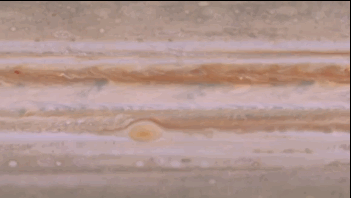
At Jupiter, pressure at the cloud tops would feel comfortable. But as you fell — and you would keep falling because there’s no surface to stand on — you’d plummet to crushing pressures. To imagine it, replace the four shoulder-balancing people with a thousand elephants, Bagenal says. “And the bottom elephant is standing on one heel,” she notes.
Much of what scientists know about Jupiter comes from gazing at its cloud cover with telescopes and spacecraft. The interior is left mostly to speculation. There might be a solid core, a seed from which the planet grew. Or there might not be. There might be an ocean of metallic fluid hydrogen swirling around that core. This would act as a gargantuan electrical conductor and generate Jupiter’s far-reaching magnetic field. Or there might be abundant stores of water vapor beneath the clouds.
Those are among the mysteries that Juno will investigate.
Jupiter through the ages
Data from the new probes could help answer questions about how Jupiter works today — and how the planet first came together 4.6 billion years ago.
Researchers think that when Jupiter formed, it sucked up all the gas within reach. That gas makes up the bulk of what Jupiter is today. It also represents samples of the material that swirled around the infant sun. Since then, they have been stored in a planet-sized warehouse.
Measuring the water in that gas could tell researchers where the planet formed. It also could tell what the environment was like in the solar system’s early days.
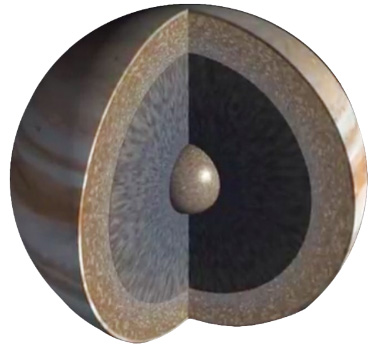
However, Bagenal points out, “Until we measure the water, we really don’t know.”
The Galileo spacecraft tried to figure out how much water is in Jupiter’s atmosphere. As it sidled up to the planet, Galileo sent a probe into the atmosphere that measured temperatures, pressures and its chemical makeup. The probe worked flawlessly. It descended far deeper than researchers had hoped. But it went in at an unlucky place. Its water measurement came up dry.
Galileo’s probe dropped into what researchers call a “hot spot.” This is a clearing in the clouds where thermal downdrafts drag dry air deep into the atmosphere. “They went into the Sahara desert of Jupiter,” Bolton says. The probe stopped transmitting before traveling deep enough to get a realistic measure of Jupiter’s water.
NASA scientists thought that they should try again. Perhaps a mission could drop multiple probes around Jupiter and to much greater depths, Bolton says. “But that’s a very expensive and challenging [goal].”
Deep dives
Bolton and his colleagues came up with a different idea. It grew into what is now the Juno mission.
Jupiter continues to cool from its formation long ago. As it does, it glows with microwave energy it emits. Water excels at absorbing microwave energy at specific frequencies. A ship could orbit Jupiter and measure what share of those frequencies are being absorbed. From that, researchers could figure out how much water is hiding beneath the clouds.
So to measure the microwaves, Juno will loop around the planet many times. As it does, it will record the intensity of microwaves in different frequencies.
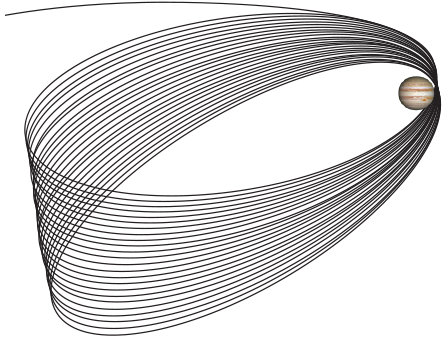
One theory for how giant planets form is that they start with a seed of rock and ice. These then attract a puffy atmosphere. Another idea is that gas planets form when a blob of hydrogen and helium gas collapses under its own weight. This would skip the need for a solid core.
Juno could resolve this debate. As it loops around the planet, Juno will speed up and slow down. This will happen in response to subtle changes from one spot to another in Jupiter’s gravitational pull. By tracking these accelerations, researchers will be able to figure out how mass is distributed deep inside the planet. This will tell them whether there is a concentrated core or not.
One advantage this spacecraft has over earlier ones is its orbit. Juno will circle perpendicular — at a 90-degree angle — to the equator. It will fly from pole to pole skimming the cloud tops. Galileo, by contrast, usually kept its distance from the planet. It also never strayed far above or below the equator. Getting in close will allow Juno to make detailed measurements. And the north-to-south flight path will let the spacecraft scan all latitudes for a more global probe of the planet’s innards.
Still, Jupiter doesn’t make that easy.
“We’re going into a very hazardous region,” Bolton says. This is “probably the most hazardous region in the solar system outside of doing a dive bomb into the sun.” Belts of high-energy radiation and charged particles encircle Jupiter. These belts are not friendly to spacecraft electronics. To survive, Juno’s instruments are sealed inside a 200-kilogram (441-pound) titanium vault. The spacecraft can only speak to the outside world through heavily shielded cables. “We’re like an armored tank going to Jupiter,” Bolton says.
(Story continues below interactive image)
That tank carries a camera, spectrometers, magnetometers and devices to make plasma and particle measurements. Of course, it also has a microwave sensor and a radio antenna. The plan is to repeatedly get in close to the planet and then get far away fast.
Once Juno settles into its routine, each orbit will take 14 days. Most of that time will be spent far from the planet, outside the radiation belts.
Because of the planet’s rotation, each time Juno swoops in, it will scan a different longitude. During those deep dives, the probe will fly just 5,000 kilometers (3,100 miles) above the cloud tops. Gravity will accelerate it to roughly a quarter of a million kilometers (155,000 miles) per hour. That will set a new spacecraft speed record. At that speed, Juno could go from Boston to Los Angeles in one minute.
The poles
In the hours before and after each close brush with the planet, Juno will fly over Jupiter’s mysterious north and south poles. “This is terra incognita for planetary scientists,” says Leigh Fletcher. He is a planetary scientist at the University of Leicester in England. (Terra incognita is a term from mapmaking. It describes an area that has yet to be mapped.)
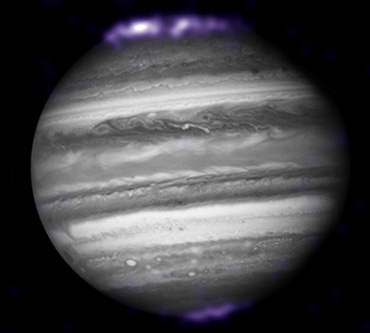
At the poles, Juno will give researchers a close look at Jupiter’s auroras. These are Jupiter’s equivalent of Earth’s northern and southern lights. And on Jupiter, these dancing ribbons of light are about 1,000 times as powerful as Earth’s. They also are longer than our planet is wide.
An aurora is produced by an interaction of the solar wind with a planet’s magnetic field. So Jupiter’s lights will provide scientists with a way to investigate the planet’s magnetic field. Most of what researchers already know about the auroras on Jupiter comes from observatories closer to home, such as the Hubble Space Telescope.
NASA’s Cassini spacecraft has been sending back data from Saturn since 2004. Throughout its spy-fest, it has turned up a host of surprises. And that suggests there might be surprises waiting at Jupiter’s poles as well. Cassini found hurricane-like vortices swirling around Saturn’s poles. “It’s like we’re looking into a plughole draining down into Saturn,” says Fletcher. “We don’t know if that’s a common feature of giant planets or unique to Saturn.”
After Juno’s arrival
Juno’s July 4 arrival at Jupiter won’t be heralded with new pictures. The spacecraft’s instruments will be switched off as it whips around the planet and begins its first orbit. Juno’s next close approach — now with accompanying snapshots — won’t happen until late August. After two 53-day loops around Jupiter, Juno will finally settle into its normal routine in November.
As the spacecraft investigates, telescopes around the world and in space will be keeping an eye on Jupiter as well. When the probe buzzes the clouds, it can see only a sliver of the planet at one time. An international observing campaign is calling on large observatories in Chile and Hawaii, orbiting instruments such as Hubble, and amateurs armed with backyard telescopes to all keep an eye out for what’s going on in the rest of Jupiter’s atmosphere.
Explains Fletcher, “Everybody is trying to make the most of this moment in time when all eyes are going to be on Jupiter.”
In February 2018, some 1.5 years after its arrival, Juno will plunge to its death in Jupiter’s atmosphere. Galileo’s mission ended the same way in 2003. Scientists don’t want to risk a run-in between Juno and any of Jupiter’s icy moons, such as Europa. Europa may harbor life in its buried liquid-water ocean. Juno was not sterilized before launch. That means Earth microbes may have hitched a ride. No one wants a crash landing on Europa to risk tainting an alien ecosystem.
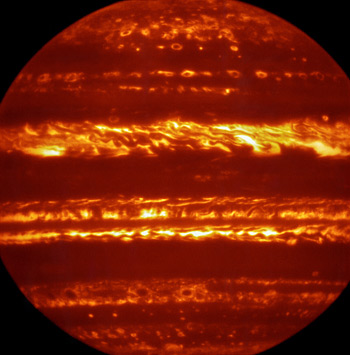
Until then, Jupiter is in Juno’s hands.
And the mission’s legacy could extend beyond the giant planet to encompass aspects of the origins of life on Earth. When Galileo’s probe dived into Jupiter, it found that there are more heavy elements — such as carbon and nitrogen — in its atmosphere than are found in the sun. Those elements are key ingredients for life.
“The stuff that Jupiter has more of is what we’re made of,” Bolton says. What happened in the early solar system to concentrate life’s building blocks out among the planets? “It’s a profound question,” he says. “I’m not saying we’re going to answer it [with Juno], but we’re going to get a piece of that puzzle.”
Getting to Jupiter
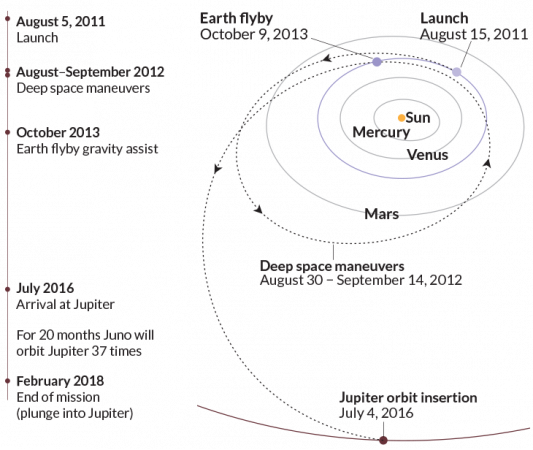
Word Find (click here to enlarge for printing)
